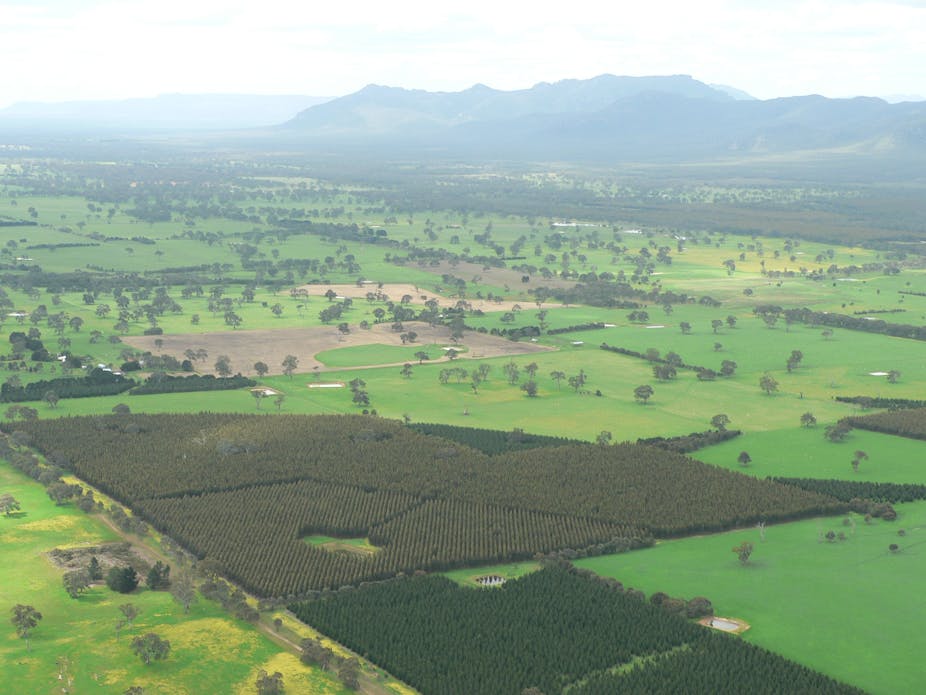This week the Treasurer announced cuts of $213m to the Biodiversity Fund and $144m to the Carbon Farming Initiative — at face value a big set back for landscape restoration.
State governments seem to be losing interest in revegetation, and several states (notably Queensland and Victoria) are weakening land clearing controls.
We have over-cleared Australia, to our great cost, and land clearing here and internationally is a major causal factor in global warming. Connecting carbon pricing with landscape restoration was an innovative, world-leading feature of the Clean Energy Futures package.
The change from a fixed to a floating carbon price will see the value of a tonne of carbon sequestered through revegetation or other landscape restoration measures drop by a factor of four. It reduces an important incentive and funding mechanism to a level likely to be too low to make a significant difference across most of the continent. The funding cuts to landscape programs will also see many innovative projects abandoned or moth-balled.
In 1999, Minister for the Environment Senator Robert Hill, said:
Few things say more about our stewardship of the Australian landscape than the condition of our native vegetation…[it] binds and nourishes our ancient soils; it shelters and sustains native wildlife; it protects streams and wetlands, estuaries and coastlines; it absorbs carbon dioxide and emits oxygen.
… It saddens me that, at the end of the 20th century, our native vegetation is still in widespread decline. We are clearing about three times more native vegetation each year than we are replanting, with all the negative environmental multipliers that entails.
It explains why all Australian governments over the last 30 years have funded tree-planting programs.
At the national level, the Hawke government initiated the One Billion Trees program in the early 1990s. The biggest investment under the Howard Government’s Natural Heritage Trust was the $350m Bushcare Program. We subsequently had the National Action Plan for Salinity and Water Quality. In parallel with those grant programs, about half a million hectares of plantations were established by the tax-break driven and now discredited Managed Investment Schemes.
Now we have Caring for our Country, the Biodiversity Fund and the Carbon Farming Initiative, all of which support revegetation.

Well-planned revegetation delivers many benefits. It conserves, buffers and enriches native plant communities and wildlife habitat. It reduces soil and water loss and degradation. It provides shelter, shade and fodder; a cooler regional climate; carbon sequestration; increased soil fertility and productivity; more sustainable agriculture; timber and other tree products; pollination services; production of second generation biofuels; and improved food, water and energy security.
So what has been achieved and what have we learned? To what extent have these benefits been realised? Is there still a case for public investment?
Unfortunately we can’t be definitive. Governments of all stripes have failed to invest sufficiently in long-term monitoring of revegetation. Anecdotally, the impact on the Australian landscape has been modest at best: most of Robert Hill’s observations are still pertinent today.
Recently, a group of expert revegetation practitioners, convened by Australia 21, gathered to discuss the problem. They concluded, in the Repairing Australia’s Landscapes report, that impacts have been limited at a national scale. Notwithstanding local successes, the scale of our response is dwarfed by the magnitude of the challenge.
But there are ways to scale up revegetation efforts without tapping the taxpayer for tens of billions annually:
Climate change is a game changer. We can no longer just conserve bushland, we need to imagine and construct new landscapes, with new farming systems, in which perennial native vegetation plays a strategic, structural role.
Embrace all Australian landscapes and all Australians, rural and urban. Landscapes are vital to local, regional and national identity. All our futures depend on them. Many industries, resources and communities would benefit from expanded landscape revegetation and regeneration.
Energise a landscape regeneration and management industry.
Generate more private-sector involvement, including investment in traditional products and new markets for carbon, water and second-generation biofuels. Use a mix of instruments such as carbon credits and patient investment by superannuation funds. Carbon pricing remains crucial in encouraging revegetation, discouraging land clearing and providing a funding base.
Encourage better links between policy and science, including effective, early evaluation and long-term monitoring.
Think national in scope and ambition, but devolve governance and design to the local level. Landholders, community landcare groups and regional catchment bodies all have important, complementary roles. Community engagement delivers social capital, environmental literacy and political buy-in.
Repairing Australia’s Landscapes is a clarion call that national landscape restoration programs have a critical role in a time of global change.
Sure, they are no substitute for a comprehensive, market-based approach for reducing net emissions. But let’s not throw the baby out with the bath water.
Conserving bushland and well-planned revegetation generates so many additional benefits that we should be funding it anyway. In doing so, we should learn and build on lessons set out so well in the report to ensure that, as the late Peter Cullen used to say, “at least we should be making new mistakes.”
In removing the carbon price incentive for revegetation, we may have done just that.

